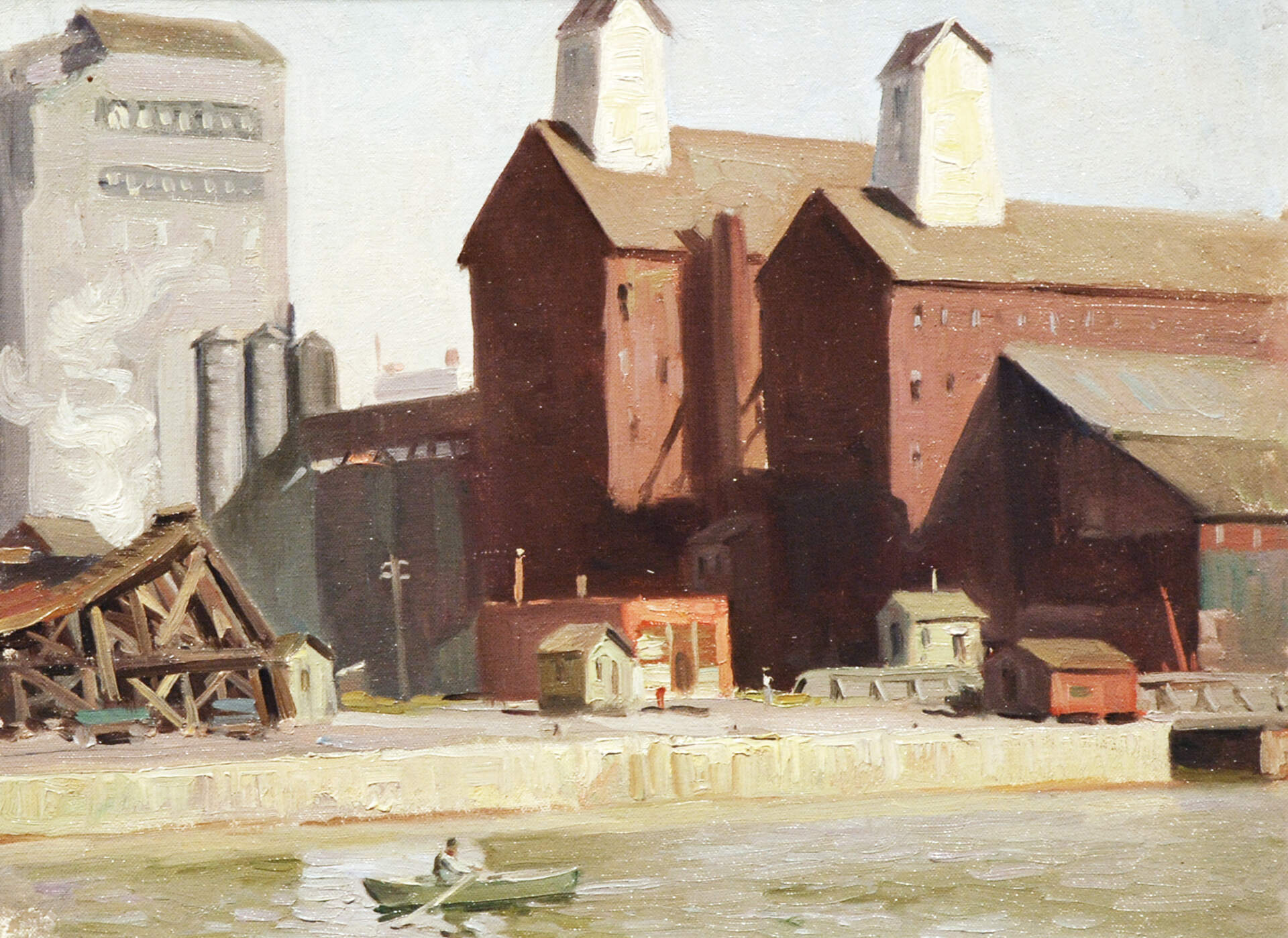Mildred C. Green (1874-1951)The Harbor
undated
oil on canvas board
11 5/8 x 15 1/2 inches (Frame: 15 3/4 x 19 1/2 inches)
Anonymous Gift, 1983
If the newly completed Erie Canal (1825) positioned Buffalo for predominance at the gateway to Lake Erie, grain from the west was the commodity that assured its growth.
By 1840 Buffalo was handling more than two million bushels of grain each year. This transport was highly labor intensive. In the Buffalo Harbor, more than 500 men were required to unload grain ships and transport cargos to Erie Canal barges. It was dusty, dangerous work, and storage was nearly impossible.In 1842 Buffalo merchant Joseph Dart addressed these problems with the construction of the first grain elevator. It would change Buffalo’s skyline for the next century and revolutionize the grain trade industry.
The next important structure was the C.W. Evans Elevator. The first Evans Elevator was built in 1847 only to burn down in 1865. A second burned a few years later. The highly flammable wood construction of these building would later be replaced by concrete. The third Evans Elevator stood in the harbor until the 1930s. This structure was a favorite subject of artists such as Mildred Green and Charles Burchfield. It stood like a landmark for generations of mariners arriving in Buffalo. After only a few short years of vacancy it was demolished in 1939.
